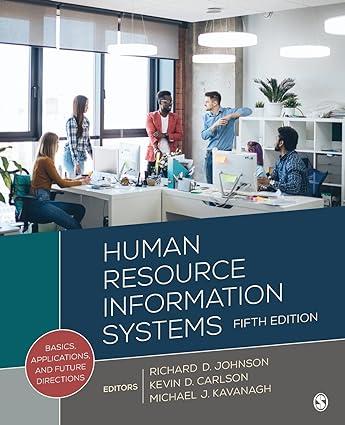Target Corp. is one of the major retailers in the United States, with more than 1,800 stores
Question:
Target Corp. is one of the major retailers in the United States, with more than 1,800 stores across the country. They employ people both at their retail storefronts, as well as in their distribution centers across the United States. They grossed over $75 billion in revenue in 2019. Their stores carry a variety of products for consumer usage: electronics, consumer health care, cleaning, grocery, toys, clothing, and seasonal goods.
Target Corp. regularly employs a seasonal and temporary staffing model during peak seasons in both their retail stores and their distribution centers. In 2018, Target hired approximately 120,000 team members for its stores and 7,500 at its distribution and fulfillment centers, many of whom remained with the company after the peak season. Target’s in-store roles can vary, from team members who perform cashier duties to others who handle the selection of material within the store for online order pickup, returns, stocking shelves, and more.
In their distribution centers, the roles can also vary but tend to be among the entry-level roles in each of their buildings.
These range from unloading cases of inbound freight off of trailers and loading them onto conveyor belts, loading trailers with outbound product heading to the 1,800-plus stores, as well as packing smaller units into caseloads meant for the stores. Most of these are quicker to learn and master as compared to the risks associated with training someone on equipment such as forklifts. One major difference in their seasonal hiring in the distribution centers is that Target Corp. utilizes temporary staffing services to supplement their hiring practices.
The use of temporary staffing moves the burden of finding, interviewing, and screening a significant number of staff members who may only be there for three to four months.
It also lightens the burden of risk, as temporary staffing agencies absorb the risk of worker compensation costs, unemployment insurance, and payroll, as well as the human relations elements of their contingent workforce. This enables Target Corp. to continue to bring in productive team members to fulfill their retail store order volumes. At the end of the seasonal period, many of the temporary employees are released from their temporary assignments with Target and become available for placement with other businesses.
For a cost, Target benefits in the time spent on recruiting and onboarding, as well as offboarding during critical times in their financial cycles.
Questions
1. What are some of the advantages and disadvantages Target adopts with the use of seasonal staff?
2. What types of job design model would Target be best suited to use with their seasonal hiring model?
3. What quantitative or qualitative forecasting do you believe Target used to develop their staffing strategy?
4. How does a seasonal hiring strategy differ from a yearround strategy?
5. How does using a seasonal staffing strategy help Target with regard to turnover and employee morale?
6. What trend, ratio, or regression analysis could Target Corp.
use to help with its decision to use seasonal staffing?
Step by Step Answer:

Human Resource Information Systems
ISBN: 9781544396743
5th Edition
Authors: Richard D. Johnson, Kevin D. Carlson, Michael J. Kavanagh





